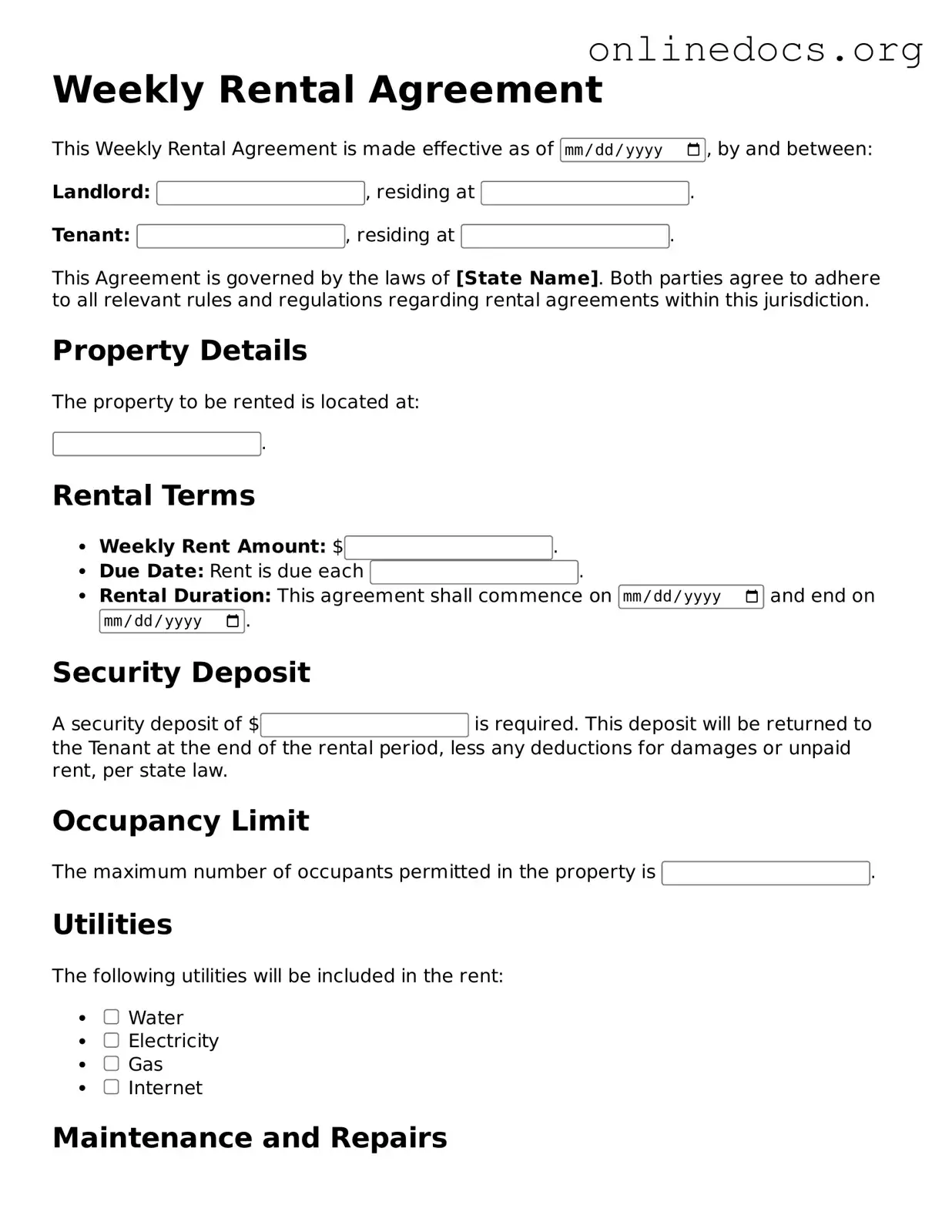The Weekly Rental Agreement is similar to a Month-to-Month Rental Agreement. Both documents outline the terms of renting a property, but the Month-to-Month Rental Agreement typically allows for a longer rental period. It provides flexibility for both landlords and tenants, enabling either party to terminate the agreement with proper notice. This document usually includes details about rent due dates, maintenance responsibilities, and rules regarding property use.
Another document that shares similarities is the Lease Agreement. Like the Weekly Rental Agreement, a Lease Agreement specifies the terms of rental, including duration, rent amount, and responsibilities of both parties. However, a Lease Agreement usually covers a longer term, often one year. It provides a more stable arrangement for tenants and landlords, with specific clauses that protect both parties' interests.
The Rental Application is also comparable. While it serves a different purpose, both documents are essential in the rental process. The Rental Application collects personal information from potential tenants, including employment history and references. This information helps landlords assess the suitability of applicants before finalizing any rental agreement, including a Weekly Rental Agreement.
The Security Deposit Agreement is another related document. It outlines the terms under which a security deposit is collected, held, and returned. Like the Weekly Rental Agreement, it aims to protect the landlord's property while ensuring the tenant understands their financial obligations. Both documents work together to create a clear understanding of the rental terms.
A Roommate Agreement shares similarities as well. This document is used when multiple tenants share a rental property. It outlines each roommate's responsibilities, including rent payment and maintenance duties. Like the Weekly Rental Agreement, it aims to prevent disputes and clarify expectations among all parties involved.
The Sublease Agreement is another document that resembles the Weekly Rental Agreement. It allows a tenant to rent out their leased space to another party, under specific terms. Both agreements detail the rights and responsibilities of the involved parties, ensuring that the original lease terms are upheld while providing flexibility for the tenant.
A Rental Addendum can also be compared to the Weekly Rental Agreement. An addendum serves as an addition or amendment to an existing rental agreement, clarifying specific terms or conditions. It can address issues such as pets, maintenance responsibilities, or alterations to the property, similar to how the Weekly Rental Agreement outlines specific rental conditions.
The Eviction Notice is another document that shares a connection with the Weekly Rental Agreement. While its purpose is to terminate a rental agreement due to lease violations or non-payment, it is grounded in the terms set forth in the original rental agreement. Both documents highlight the importance of understanding tenants' rights and responsibilities within the rental relationship.
The Move-In/Move-Out Checklist is also relevant. This document is used to assess the condition of the property before and after a tenant occupies it. Similar to the Weekly Rental Agreement, it provides a clear understanding of expectations regarding property condition, maintenance, and potential security deposit deductions for damages.
Understanding the various rental agreements available is crucial for both landlords and tenants. Each type, from the Weekly Rental Agreement to the Sublease Agreement, serves unique purposes while detailing essential terms of tenancy. For those needing a structured format, a California Lease Agreement form can be found at legalformspdf.com, ensuring that parties are protected and well-informed throughout the rental process.
Lastly, the Lease Termination Agreement bears similarities. This document outlines the conditions under which a rental agreement can be ended. Like the Weekly Rental Agreement, it ensures that both parties understand their rights and obligations when terminating the rental relationship, providing a clear path to resolution.
